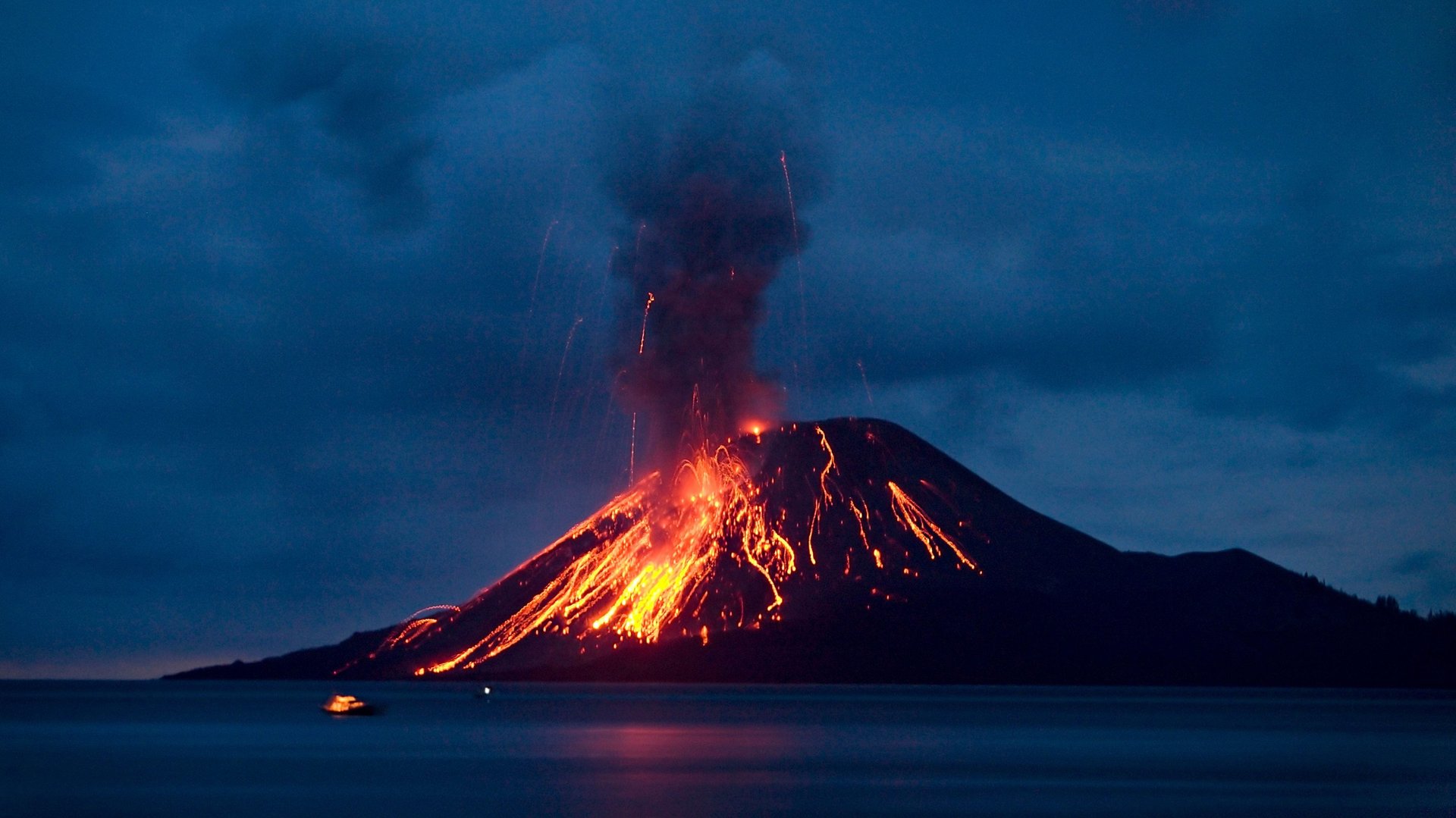The world’s last Javan rhinos live on the edge of the Anak Krakatau volcano
There are only 67 Javan rhinos alive in the world, and all of them live in Ujung Kulon National Park in Java, Indonesia. That’s the same park hit last week by a deadly tsunami, triggered by the eruption of the volcanic Anak Krakatau island Dec. 22.


There are only 67 Javan rhinos alive in the world, and all of them live in Ujung Kulon National Park in Java, Indonesia. That’s the same park hit last week by a deadly tsunami, triggered by the eruption of the volcanic Anak Krakatau island Dec. 22.
The tsunami wrecked the park’s buildings and ships, and two park officials were among the 430 people dead. The rhinos were unhurt. But if the Anak Krakatau volcano erupts again and another tsunami follows in its wake, the world’s last Javan rhinos could be completely wiped out, the BBC reports.
Conservationists have warned about this possibility before. Anak Krakatau has exhibited regular volcanic activity for years, and in April 2017, a study published in Conservation Letters pointed out that a natural disaster caused by the volcano—which is within sight of Ujung Kulon National Park—was highly likely and put the rhinos at risk.
“As there are no Javan rhinos in captivity anywhere in the world, should we lose this population, we’ve essentially lost the entire species,” Nicola Loweth, a WWF officer, said in a statement last year. (The WWF contributed to the study.)
Just yesterday (Dec. 27), increased volcanic activity on Anak Krakatau prompted Indonesian officials to re-reroute flights, increase the no-go zone around it, and raise alert levels. As a result, the urgency to move the Javan rhinos to another location is also increasing, especially since it is difficult to warn people ahead of time of a tsunami caused by volcanic activity—let alone move 67 rhinos.
“We [will] take more steps quickly in preparing a second habitat [for the rhinos],” Mamat Rahmat, head of the Ujung Kulon National Park, told the BBC.
While the Indonesian government has attempted to move the rhinos to a second habitat for years, it is difficult to find a suitable location, Rahmat said. This is because available plant species, water supplies, the risk of diseases, and even the ideal soil type, must be taken into consideration.